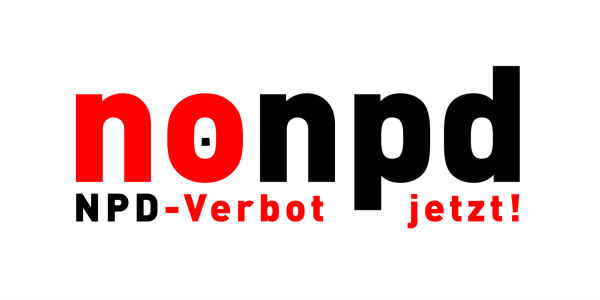Germany no longer bans extremist parties. But which European democracies do, and why?
As a last resort, democracies occasionally ban political parties. Angela Bourne and Fernando Casal Bértoa look at what kinds of parties have been outlawed in post-war Europe, and how the rationale for banning them has evolved. They explain how, early in 2017, Germany effectively put its party ban beyond use, forbearing even to close down the neo-Nazi NPD on the grounds that it was not a serious enough threat to the liberal democratic order. The success of the AfD will nonetheless lead to much debate and anguish about how Germany tackles its far right.

‘NPD ban now!’ Image: Andreas Skowronek via a CC-BY-NC 2.0 licence
The 2017 German general elections have seen the neo-Nazi National Democratic Party of Germany (NPD) eclipsed by the new kid on the far-right block, the Alternative for Germany (AfD). In the elections the AfD won 12.6% of the second vote and 94 seats, while NPD won 0.4% of second votes. The AfD achieved what the NPD and other parties of the radical right had failed to do in over five decades of trying. It won seats in the German Federal Parliament. The significance of this development, and what the right response to it should be, will be debated intensely in the coming months. The shadow of the collapse of democracy in the Weimar republic will be present.
What is clear, however, is that few will call for AfD to be banned. The fathers of the German Basic Law made provision for banning parties which threatened the free democratic basic order. In the 1950s, under the leadership of Konrad Adenaeur, the young German democracy banned the Nazi successor party, the Socialist Reich Party, and in the opening phase of the cold war, the Communist Party of Germany. Over the following decades, the idea of banning extremist parties were periodically raised – particularly when a party of the far right did well in the polls, or neo-Nazi crimes incited public outrage.
In early 2017, however, the German Constitutional Court effectively put the party ban beyond use. In January, the Court ruled that the NPD was racist, anti-Semitic, Islamophobic and xenophobic. The party sought to replace the institutions of parliamentary democracy and multiparty politics with a Nazi-style authoritarian system and professed a biological conception of the German national community that disregarded the human dignity of non-ethnic Germans. However, the Court did not ban the NPD, because it did not think the party was a serious enough threat to the liberal democratic order. It had a limited electoral showing during its five decades of existence. It was unable to assume leadership of the broader neo-Nazi movement, and it was not clear the party as such was involved in the far-right’s many acts of intimidation against asylum seekers, minorities and political opponents in recent decades.
The success of the AfD and the Court ruling rejecting the NPD ban raise broader questions for democratic communities. How common it is for democracies to consider using this ‘weapon of last resort’? What kinds of parties that have been banned? In what kind of political context may such a grave decision be contemplated? What is the relevance of party bans in an age of globalisation? We address these questions in our article in the European Constitutional Law Review. We conducted a survey of party bans in Europe between 1945 and 2015. The majority – 20 out of 37 European democracies in our sample – had banned a party at some time during that period. These are some of our results.
Are small and anti-system parties more likely to be banned?
Banned parties are typically parties of the far left and far right, religious fundamentalists and separatist parties linked to terrorist groups. We initially thought that democracies would be more likely to ban small parties, because parties with more voters had stronger claims to democratic legitimacy and banning them might provoke political upheaval. Surprisingly, about a quarter of all banned parties were ‘salient’ parties, whose vote share potentially permitted them to influence the dynamics of electoral behaviour, party competition or government formation at national level or regional level. These included the German parties banned in the 1950s, Basque nationalist parties, Herri Batasuna and its successors banned in Spain after 2003, the Welfare Party (banned in Turkey in 1998) and the Communist Party of Greece (banned after the second world war).
What happens in ‘new’ or ‘consolidated’ democracies?
Arguments for banning parties seem more compelling in a context of transition from authoritarian rule – a period often characterised by polarisation, political tension and fear of a resurgence of anti-democratic forces. Not all new democracies ban parties, but many do. New postwar democracies in Germany, Austria and Italy banned former fascist ruling parties or their successors, while new post-communist democracies in Latvia, Lithuania, Moldova and Ukraine banned former orthodox communist ruling parties, among others. Where processes of democratisation have been incomplete or problematic, such as in Turkey, Ukraine, Greece (prior to 1975) or Northern Ireland (between 1922-72), party bans have also been common. Consolidated democracies banned parties too. Examples include the National Democratic Party (Austria, 1988), Flemish Block (Belgium, 2004), Centre Party ’86 (the Netherlands, 1998), the Slovak Community-National Party (Slovakia, 2006) and the Workers Party (Czech Republic, 2010). Consolidated democracies tend to be least tolerant of extreme right parties.
Are bans linked to historical experiences of authoritarian rule?
Does recent experience of non-democratic rule make democracies less likely to tolerate extremists? Germany has traditionally been seen as a paradigmatic example in this regard. Against expectations, however, our survey showed countries with historical experiences of authoritarian rule other than short-term occupation were equally likely to ban parties as those who did not have such experiences.
The rationales for banning parties are evolving
In Europe today, few extremist parties of any significance openly promote totalitarian ideologies. So it is now more difficult to argue that a party ban would prevent anti-democratic parties coming to power and implementing their anti-democratic agenda. Party ban justifications now tend to focus on threats to core principles of democratic politics, such as challenges to political equality and human dignity in increasingly multicultural societies, and aim to deny anti-system parties the legitimacy that participation in the daily rituals of democratic politics entails.
It is unlikely that the ‘blunt instrument’ of a party ban would counteract contemporary populist movements like the AfD that may delegitimise – but not openly seek to eliminate – liberal democratic institutions. In its contemporary guise, the party ban – and the threat of the ban – may nevertheless enforce limits of permissible behaviour. In a globalised era, that may include parties which back illiberal projects of national retrenchment.
This post represents the views of the authors and not those of Democratic Audit.
 Angela Bourne is Associate Professor at Roskilde University in Denmark.
Angela Bourne is Associate Professor at Roskilde University in Denmark.
 Fernando Casal Bértoa is Assistant Professor at the University of Nottingham.
Fernando Casal Bértoa is Assistant Professor at the University of Nottingham.
Also by Fernando Casal Bertoa:
What holds a democracy together – political parties, or the party system itself?





 Democratic Audit's core funding is provided by the Joseph Rowntree Charitable Trust. Additional funding is provided by the London School of Economics.
Democratic Audit's core funding is provided by the Joseph Rowntree Charitable Trust. Additional funding is provided by the London School of Economics.